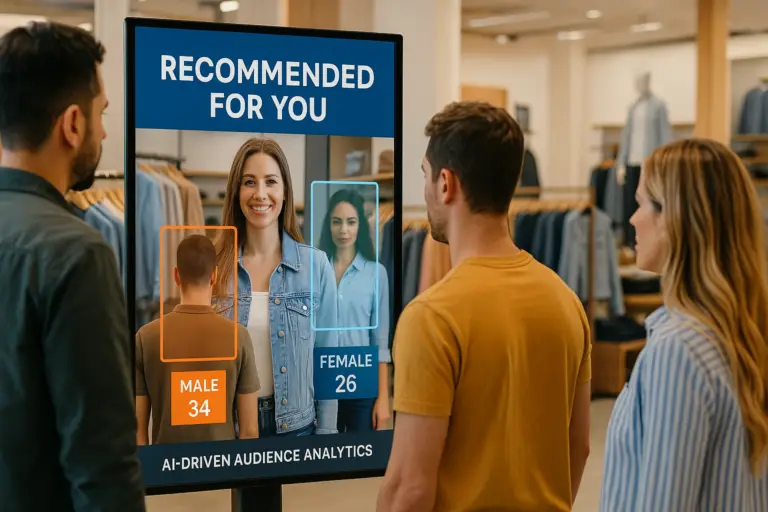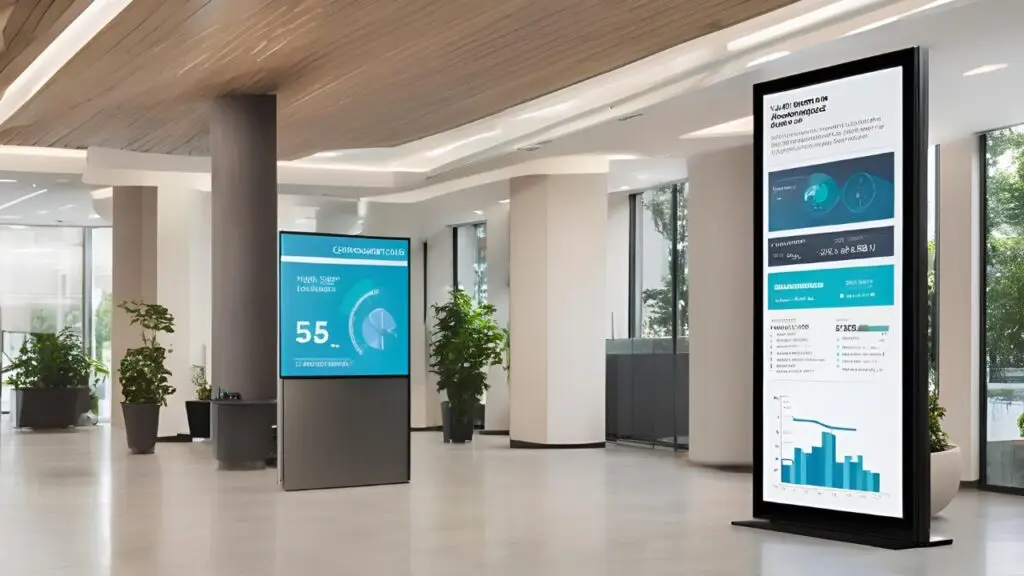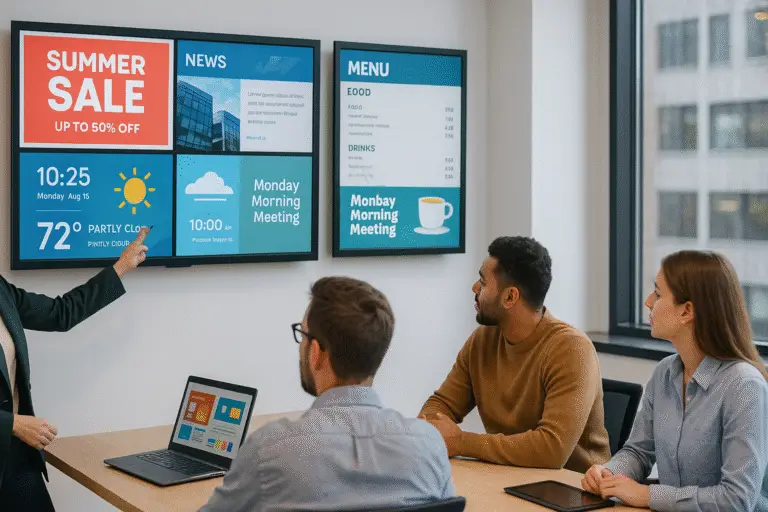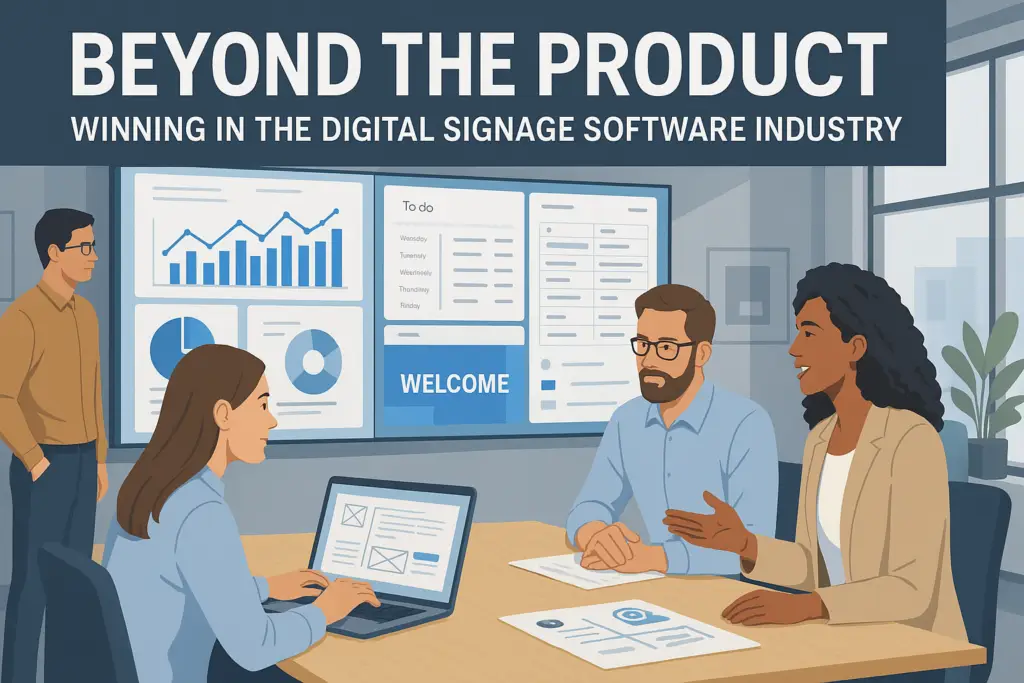Early in my career in the digital signage software industry, I was all in on the product. I believed that if the software had great features and a solid design, success would naturally follow. I was confident, maybe a little too confident.
But after years in the industry, hundreds of demos, and conversations with teams of all shapes and sizes, I’ve learned that it’s not that simple. A strong product matters, no doubt. But it’s just one piece of a much bigger puzzle.
There are a few hard truths I’ve picked up along the way. Truths that every digital signage pro should keep in mind.
The Buyer Doesn't See What You See
Most buyers don’t love it the way you do. They’re not impressed by your brilliant scheduling engine or how clean your API is.
I had to learn that the hard way.
I’ve spent years deep inside platforms. Building features, fixing bugs, fine-tuning UX. Naturally, I assumed others would get excited about the same things:
Our efficient architecture
The smart templating system we built from scratch
The user permissions model nobody asked for but everyone should want
But buyers? They didn’t care.
Because they’re not thinking about your product. They’re thinking about their own problems:
Will this fix the chaos my ops team deals with every day?
Can I afford it without jumping through hoops for budget?
Will my team actually use it, or will they hate me for choosing it?
That disconnect? It can kill a deal if you’re not careful.
The key is to stop selling features and start solving problems. Show how your product helps them, not how it impresses you.
This doesn’t mean you need to dumb anything down. It means you need to translate your product’s value into something that matters to the person you’re talking to.
Because buyers aren’t looking for the best product.
They’re looking for the right fit.

Stop Leading With What You Think Is Cool
Buyers don’t care how technically impressive your product is. They care if it solves their problem without becoming a new one.
One of the biggest mistakes I’ve seen (and made) is treating a demo like a victory lap. We open the CMS, show off the sleek dashboard, run through advanced features and lose the room.
Why? Because we’re thinking from our point of view, not theirs.
You can’t expect your audience to connect the dots. You have to draw the picture. That means doing your homework before the demo. Know their pain points, internal hurdles, tech comfort level, and what success looks like to them.
Here’s what that looks like in practice:
If the team is overwhelmed and nervous about new tools:
Skip the advanced logic engine. Show them how quick it is to update the lunch menu and move on.If they’re worried about budget:
Don’t highlight features. Show how the system helps cut waste or prove ROI.If they’ve had bad vendor experiences:
Lead with your onboarding process and support track record, not what’s coming on your roadmap.
The goal isn’t to impress them. It’s to make them see how much easier life gets with your software in place.
That’s the difference between just giving a demo, and starting a conversation that actually goes somewhere.

They Don’t Just Want Features. They Want to Feel Safe.
One of the biggest things software vendors forget? Buyers aren’t just comparing features, they’re looking for someone they can trust.
This industry is crowded. Everyone’s promising a seamless CMS, a better UI, smarter scheduling, or tighter integrations. It’s a lot. And for buyers, especially those making a digital signage decision for the first time, it can feel overwhelming.
That’s why trust matters more than you think.
Buyers need to believe your product will actually work. That you won’t ghost them after the install. That when things break, and they will, you’ll be there. They need to feel like you get them, not just their use case, but their daily headaches, their internal politics, their very real fear of picking the wrong platform.
And sometimes, trust outweighs features.
I’ve seen deals go to vendors with fewer bells and whistles, simply because they showed up consistently, communicated clearly, and treated the buyer like a partner, not a lead to close.
Empathy wins. Clarity wins. Relationships win.
If your buyers feel safe with you, you’ve already done half the job. The rest is just proving you can deliver.
Book a free consultation today
When Price Matters More Than Product
Not value, not features. Not your killer pitch about long-term ROI.
Just price.
It’s one of the most frustrating parts of selling digital signage software. You could have the better platform, the stronger team, and the cleaner UX. But if your competitor comes in 30% cheaper and the buyer’s under pressure to cut costs? You’re out.
That doesn’t mean you failed. It just means the buyer’s reality didn’t leave room for better.
Here’s what to do instead of taking it personally: reframe.
If cost is the conversation, lead with the value story:
How your system saves their team hours every week
How fewer support calls reduce overall operating costs
How avoiding one botched rollout easily covers the price difference
And if you’re playing in tight markets, get flexible. Offer:
Tiered pricing
Long-term commitment discounts
Bundled support or onboarding
Small touches like these make your offer easier to say yes to, without cheapening your brand.
Not every buyer will choose you. But the ones who do? They’ll stick around longer if you’ve made it crystal clear why you’re worth it.

A Great Product Isn’t Enough. Never Was.
If there’s one thing I’ve learned in this industry, it’s that building great software isn’t the hard part. Selling it, really selling it, is where most teams stumble.
Because success in digital signage doesn’t hinge on code. It hinges on trust.
- Trust that your software will work when it matters.
- Trust that your team won’t disappear after the contract is signed.
- Trust that you’re not just selling screens, but solving real problems.
That kind of trust doesn’t come from spec sheets. It comes from every interaction, from the first email to the last onboarding call.
One of the best ways to build it? Educate. Show people what’s possible. Most buyers don’t need more features, they need more vision. Host the webinar. Write the honest blog post. Walk them through use cases that actually apply to their world.
And once they’re in, don’t vanish.
A responsive, human support experience is one of the most underrated competitive advantages in this space. If you want your customers to stick, you have to show up. Consistently. With real answers.
Your software might win them over. But how you show up is what keeps them around.
The Evolution of the Digital Signage Software Industry
This industry doesn’t sit still. Screens are getting smarter. Expectations are getting higher. And buyers aren’t just shopping for what works now. They’re betting on what will still work two years from now.
If your product can’t keep up, it’s already behind.
AV and IT decision-makers know the pace of change. They’ve lived through bad rollouts, outdated platforms, and vendors who stopped updating after version 2.0. They’re not just buying software. They’re buying confidence that you’ll evolve with them.
To earn that confidence, you need to show:
A real roadmap, not just vague promises
A willingness to integrate new tech like AI, automation, and data analytics
A commitment to helping them anticipate change, not just react to it
Buyers want content that’s smarter, faster, and more relevant. They want systems that can auto-adjust, self-optimize, and spit out useful insights without a six-step export process. They want to spend less time managing their network and more time benefiting from it.
If your software helps them do that and you can prove it, you’re not just a vendor. You’re a partner in keeping them ahead of the curve.
That’s where the long-term wins happen.

Final Thought: The Best Product Doesn’t Always Win
Being proud of your product is a good thing. But in this industry, it’s not always enough.
The best software doesn’t always come out on top. Sometimes buyers go with the cheapest option. Others will stick with a familiar vendor. Sometimes they’re swayed by flashy features that don’t actually solve their problems.
That’s the reality. You can either fight it or learn how to work with it.
Winning isn’t just about writing great code. It’s about knowing what your buyers care about, building trust, and showing up when it matters most. It means being clear, helpful, and easy to say yes to.
Yes, your product matters. But the way you sell it, support it, and frame it? That’s what makes it a smart investment.
You don’t have to be the loudest or flashiest. You just have to be the right fit. Do that well and consistently, and you won’t just close more deals. You’ll build a brand people come back to.
FAQ
What is the most important factor when selling digital signage software?
While a well-designed product is essential, understanding the buyer’s perspective is key to success. Buyers prioritize problem-solving, budget fit, and workflow design over technical features. Tailoring your pitch to emphasize how your software meets their specific needs—whether through ease of use, cost-effectiveness, or long-term savings—is crucial for winning over clients.
How can I build trust with buyers in the digital signage software industry?
Building trust requires more than showcasing the technical merits of your product. Buyers need to feel secure that your software will deliver on promises and that your company will provide ongoing support. Establish trust by listening to their concerns, offering transparent communication, and demonstrating genuine commitment to solving their challenges. Building strong relationships can often outweigh product superiority in decision-making.
How do I handle situations where price is a bigger concern than product quality?
In budget-constrained environments, price may outweigh product quality. To compete in these scenarios, focus on highlighting long-term savings, efficiency gains, and reduced risk associated with your software. Consider offering flexible pricing models, such as discounts for long-term commitments or bundled services, to make your product more appealing without compromising on value.


